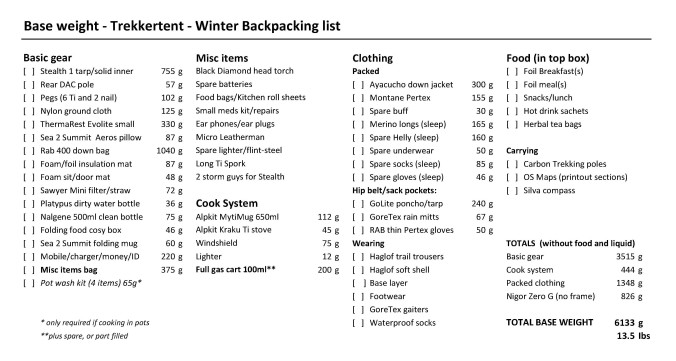My introduction to fast and light wild camping was courtesy of two friends who invited me along one sunny January afternoon. There’s a clue there if you look: January. These guys had done this before but I hadn’t. I’d cycle and car camped for many years – entirely different – and my kit reflected my experience, as did theirs.
I realised it would be a cold night in the fells and looked around for the warmest gear in my limited collection. At the time, I had only a 2-degree Vango summer sleeping bag and thin ThermaRest mat. Not a good start. Then I found ‘polar blanky’. Yes, this really was a cuddly blanket decorated with polar bears – a free gift from Damart to my aged mother, one of their ‘best’ customers (or so they told her). It was a light, synthetic fleece material and proved a warm and, probably, lifesaving addition to my kit.
We woke up to tents crisp with thick frost, at what we later found out was minus 8 degrees. The tarn we were next to had frozen over and, as I had kept my lack of appropriate kit from them the night before, when they saw what I’d brought, they were astonished I was still alive. To this day, it is still talked of as the ‘polar blanky’ trip.
Thankfully, both my kit and experience have increased greatly since then but, as a badge of honour, I still have the blanket!
Building your kit, for any sport or pastime, is quite a journey, emotionally and financially. I’ve come to realise it takes time, involves mistakes, expense, disasters, light-bulb moments, reality checks, occasionally being in the dog-house, constant indecision and even the odd sleepless night.
It seems to be a process that never quite finishes, partly because manufacturers, like software companies, are always revising and upgrading their products, teasing us with something shinier, sleeker and smaller that does exactly the same as your old one but at half the weight and twice the price. Then there are the ‘trends’, which come and go with increasing regularity as wheels are re-invented.
Those of us with slightly less experience, not to mention will-power, can have a torrid time ignoring those skilful marketeers and nailing down what really works for us.
The transformation from a ‘camper’, who is just out for fun with the family, into a demented, list-making ‘gram weenie’ can be all-consuming. What I and many others who spend quality time in the outdoors have realised is that it becomes a very personal process and, because it’s personal, it can, if not checked, become obsessive.
I thought it might be useful to share my current winter backpacking list. I’ve been building up this gear for a couple of years, swapping old for new, heavier for lighter, and lighter for even lighter. I could, of course, just go into a store or online and buy all my lightweight kit in one go and be done with it. But we all know that’s not how it works. As I said, there will always be better, lighter and smaller, just around the corner.
Most readers who backpack will recognise things they use themselves. Perhaps there’s the odd item that interests you, some you may even laugh at, and one or two that are a surprise – hopefully, in a ‘why didn’t I think of that’ kind of way. Some items double as something else, some have multiple uses and some are there, well, just because.
This is a two-night backpacking gear list with a base weight of 13.5 lbs. It’s not meant to be an ultralight list for adventure racing, and in my next post, I’ll explain my reasons for including some of the items in my bag – and why it’s vital to have a list (even if you’re not a ‘list person’).


Nice paired down list. Everything you need, any nothing you don’t need. For winter that’s a reaaly light set up. Obviously arrived at through personal experience. Always the best way, takes what works for you.
LikeLike
Thanks for the comment. Yes, honed from personal experience and constantly revisiting the list. The summer list would be a little lighter – but not much. Maybe a bivvy bag, lighter synthetic sleeping bag and GoLite ponch/tarp (for the unpredictable Lakeland weather), and fewer clothes.
LikeLike
Great write up 😊
LikeLiked by 1 person
Thanks Kate. Love your blogs. You have inspired me to bivvy this year. I sense once I’ve done it, I won’t look back.
LikeLiked by 1 person